Knobcone PinePinus attenuataHeight: 30' average mature height Hardiness Zones: 7-8 Find my zone Aspect: half shade to full sun
This plant can't be shipped to California, Hawaii, Montana
Size Availability
Out of season.
Our main crop of most plants is available starting in late fall.
Additional batches of plugs and quarts are usually added in May.
Many of our plants are propagated in limited quantities and can sell out quickly when posted, get on the notification list below so you don't miss out. Add your email to be notified as soon as we have them back in stock:
This does NOT subscribe your email to any mailing lists, our system will only send an inventory notification message.
Knobcone Pines are an extremely tough species native throughout hot, dry sites throughout California and southern Oregon. It is one of the few trees that can grow in the nutrient-devoid and heavy metal rich rocks of the Siskiyou Range in Southern Oregon. Their heat and drought tolerance is also extremely impressive, matched by very few other Klamath Mountain conifers. In the landscape they are gorgeous for their persistent cones that are produced even on young trees and open branching habit that displays the trunk. The needles have a slightly gray cast, similar to the Ghost Pine (
Pinus sabiniana).
They have a very interesting adaptation to forest fires, which are common throughout the Knobcone Pine's native ranges. Unlike many other Pine species that drop open their cones and drop their seeds within a year of ripening, Knobcone Pine trees seal their cones shut with wax and hold them for decades. In fact the cones can be held on the trunk for 50-60 years with almost no decrease in seed viability. During a forest fire the heat melts the wax which allows the heavily armored and insulated cones to begin to open within a week of the fire. Once the cones are opened the unharmed seeds can disperse into a landscape where few other trees and seeds remain uburnt, and in huge quantities as the number of closed cones secured to tree trunks and branches increases every year without a fire.
The new generation of seedlings form dense carpets throughout the burned forest and have very little competition for the first few years, but seeds from other trees and shrubs blow in from unburned areas and start to grow alongside the Knobcones. Knobcone Pines are excellent at growing on harsh sites without shade and as they start to mature provide the necessary shelter for other plant species to get established. These other species would struggle to survive their first summer of blazing heat without the shelter provided by older Knobcones, but once they get established they will grow faster than the Knobcone Pines and start to outcompete them.
As time goes on the Knobcones will be slowly replaced by Firs, Oaks, and, other Pines, and Madrone trees until after hundreds of years only a few scattered Knobcone trees will be left standing.
All the Knobcones will be the same age, producing no new seedlings to replace dead and blown down trees without the heat of a fire. But o
nce another fire sweeps through the forest, the few remaining Knobcone pines will spread their seeds and start the whole cycle over again.
Unlike most pines which have one straight trunk and horizontal branches, the branches of Knobcone Pine trees grow upwards which leads to dense, multi-trunked trees.

Cones developing on a young shoot of Pinus attenuata
Source: Commons
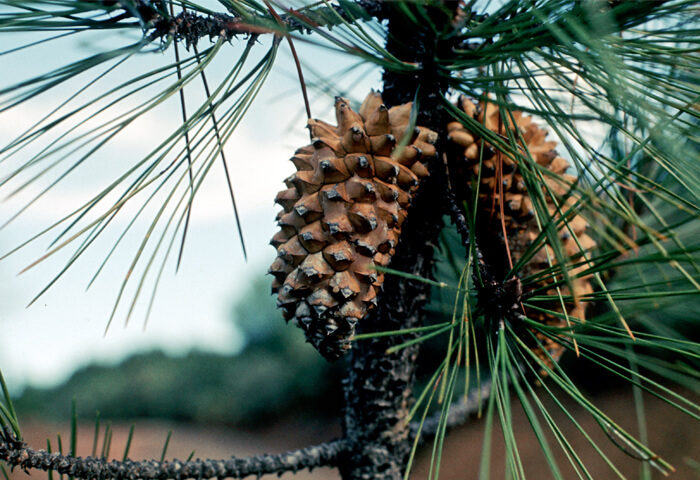
The cones on Pinus attenuata are tough and armored to protect the seeds within
Source: Commons
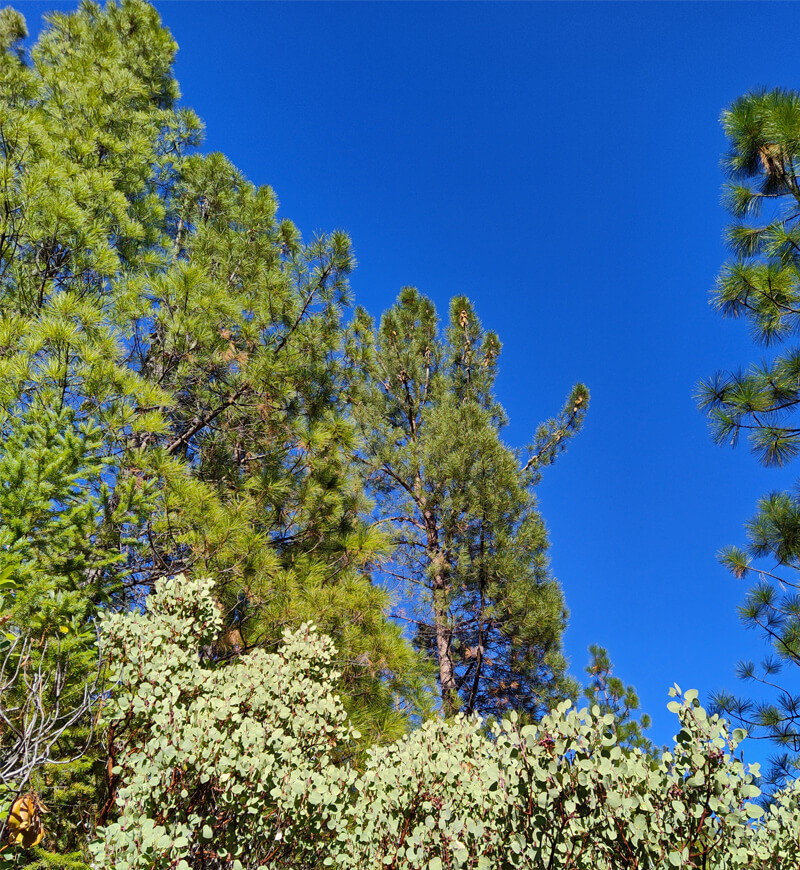
Pinus attenuata - Knobcone Pine trees growing in southern Oregon and displaying their multiple-leader form, with ripe cones on the tops of the trees
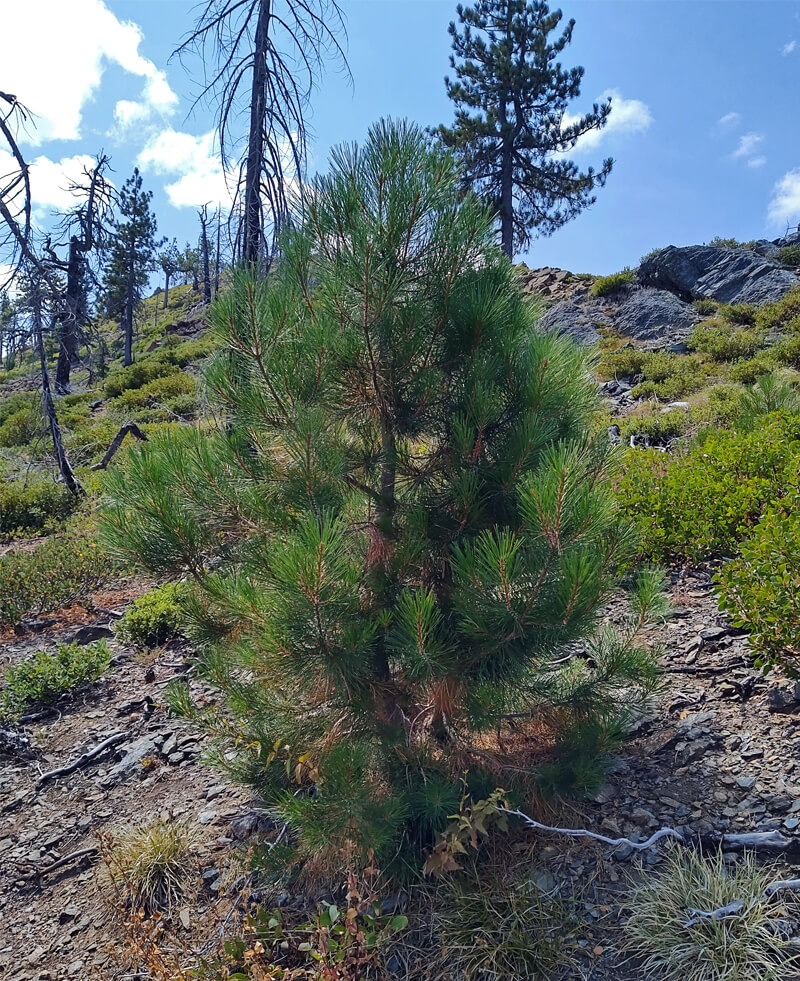
Pinus attenuata - Knobcone Pine growing after a fire
Packing Plants For ShippingMost of our plants are shipped bare root while they are dormant from late November through April and ship via the U.S. Postal Service. Bamboo plants can be shipped in their containers year-round by UPS.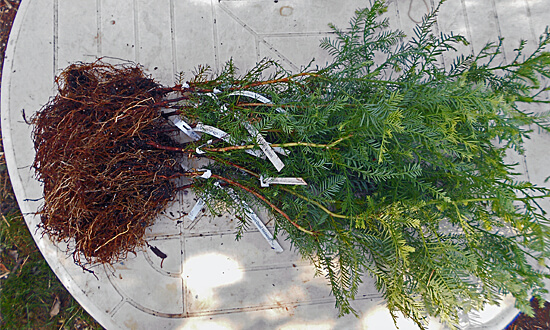 Bare root plants are soaked and wrapped together in bundles. ictured are 10x 24 inch tall Coast Redwoods. 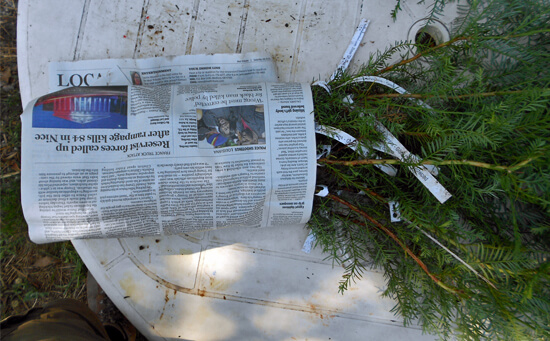 The bundled plants are wrapped in paper and labeled by variety. 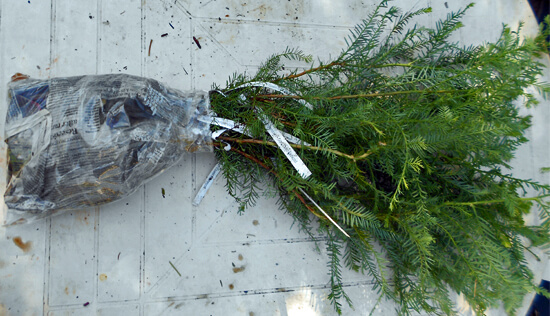 The bundle is wetted and bagged. 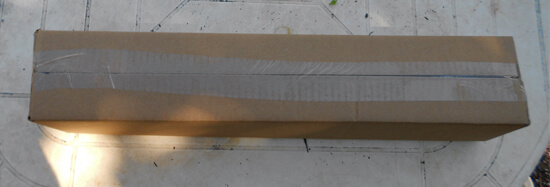 Bundles of plants are secured in long boxes. Pruning and Plant SizesWe prune both the tops and the roots of our plants at least once per year while they are growing in our nursery to ensure they develop a strong, dense form. Regular annual pruning goes a long way to ensure a healthy branching structure and this is often a missed step in many nurseries. Pruning a plant back hard after it has been neglected pruning-wise often results in an irregular branch habit or multiple leaders so we prune early and regularly instead. We also prune the roots of our plants while they are dormant which causes them to produce a much more branched structure and helps to elimate tangled masses that hinder future development. Plants that have been root pruned establish themselves much more quickly than root bound plants. Generally, hardwood plants will be pruned in the winter and conifers will be pruned in the summer.Before shipping plants we prune the tops and roots one last time. Conifers will usually have very little pruning except to balance out long branches. Shrubs are usually pruned to around 1-2 feet tall to encourage low branch development and small to medium sized trees are usually pruned to around 36-40 inches. Pruning trees at this height encourages dominant branches to begin forming around 3 feet from the ground which typically looks the best in most situations. However, if you want a tree to have branching start higher (some city codes require trees to not branch below 4 feet) we have longer boxes available. To request taller trees please contact us at least three days before your ship date. Depending on your location and the shipping routes there may be a fee for oversize package handling (usually about $15 for a 60 inch box). 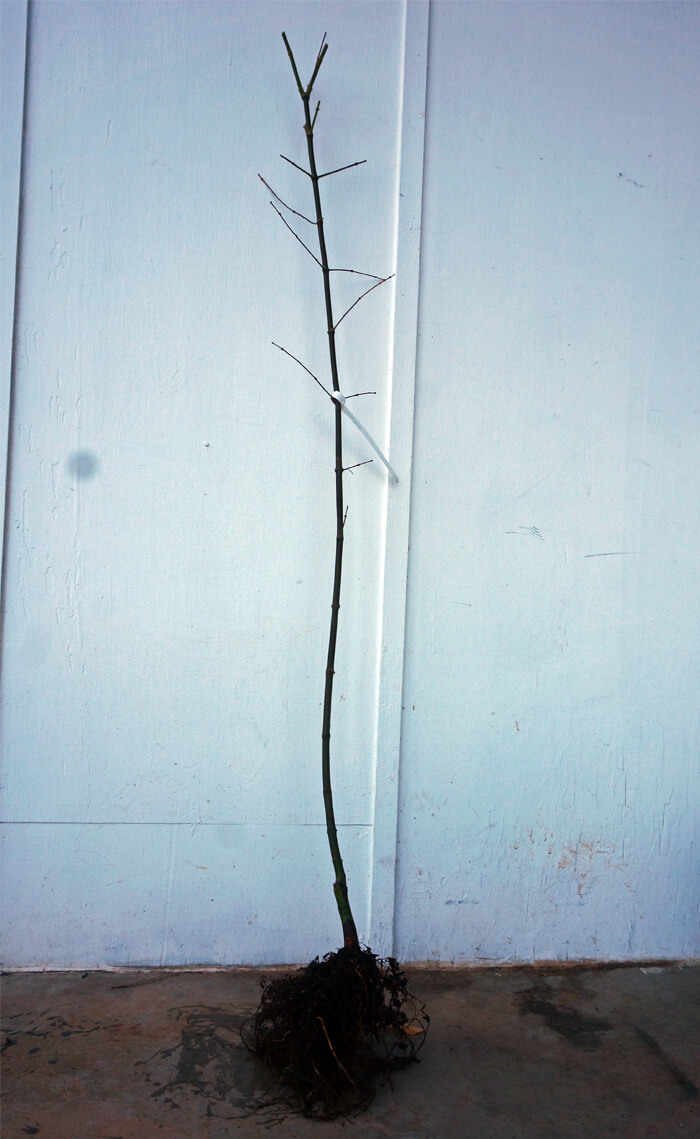 Tall trees (Oaks, Ginkgo, large Maples, etc.) are pruned to 40 inches to encourage crown development from about 36 inches and up 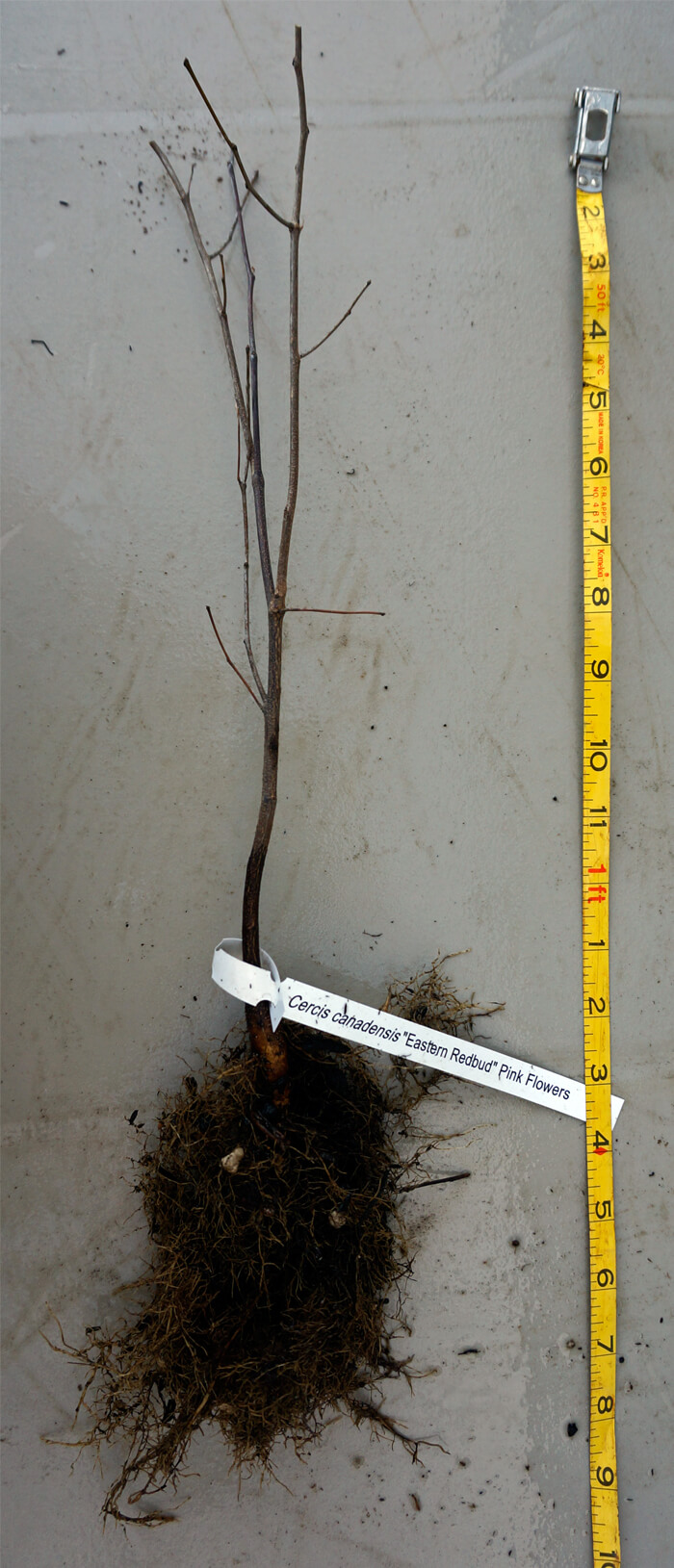 Small and medium trees (short Maples, Redbuds, Stewartia, etc.) are pruned 10-20 inches above the prune line from last year 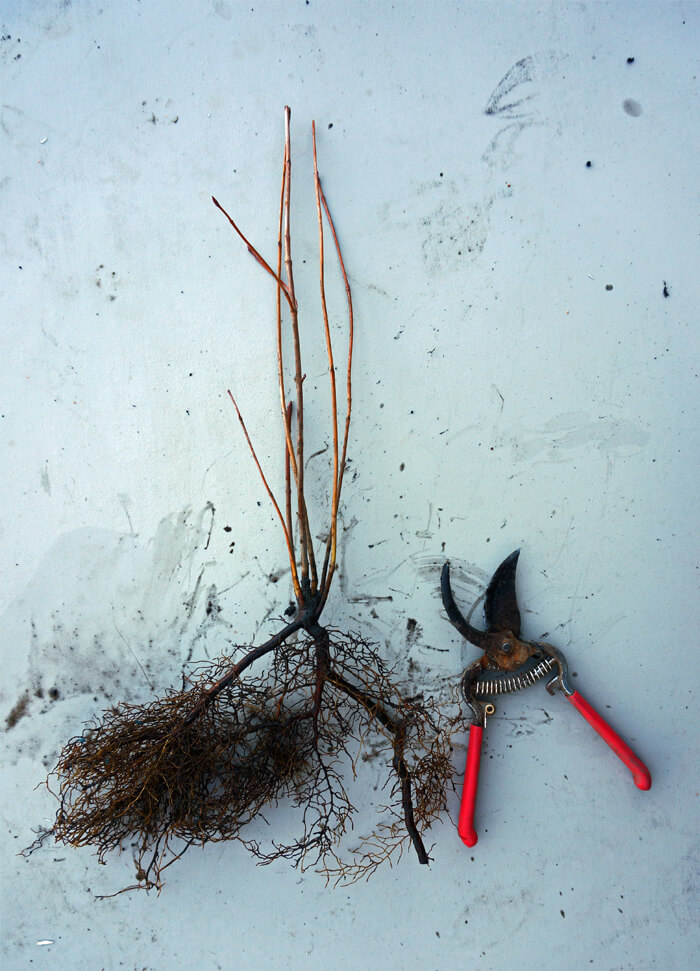 Shrubs (Weigela, Hydrangea, Viburnum, etc.) are pruned to 18 inches tall and root pruned one last time 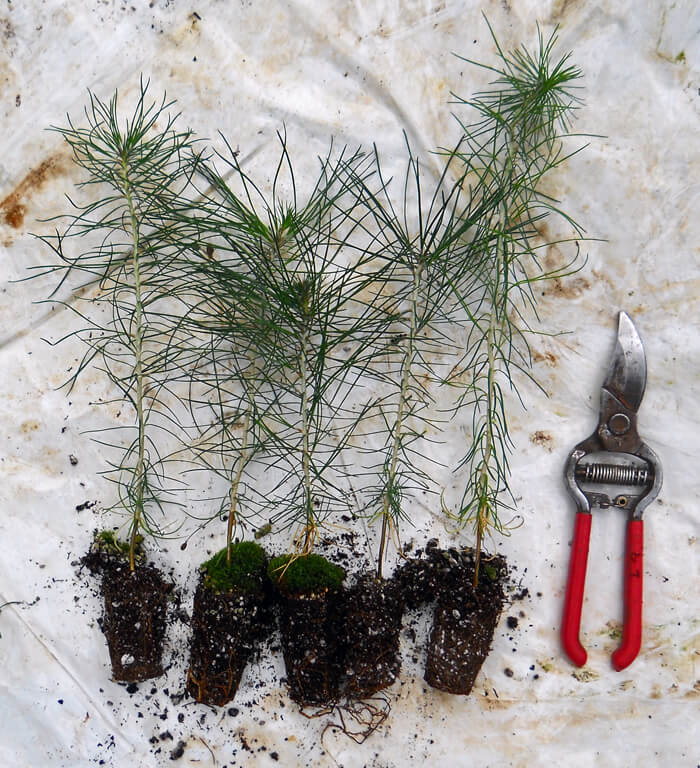 Small plug size Bamboo Plants Are Shipped In Their ContainersBamboo roots are not flexible and so plants have to be shipped in their containers. These plants are heavier and are shipped separately from bare root plants. Because they are potted they can handle longer transit times so can ship via UPS Ground instead of USPS Air Mail. Potted plants can also be shipped year-round.We regularly top our 1 gallon bamboo plants at 24-30 inches tall throughout the growing season. This results in dense, bushy foliage while allowing for economical shipping. From this size most running species will grow to 5-6 feet tall in the first spring and clumping species will usually grow to 4-5 feet tall.  1 gallon bamboo plants strapped in and ready to be sealed. Unpacking Bare Root PlantsYou will be sent tracking details as soon as your plants are shipped. Unpack your plants as quickly as possible after they are delivered. We use two types of boxes, side-sealing and top-sealing. For boxes that are taped along the whole length you can cut the tape on either side and remove the plant bundles by cutting the tape holding the bundle to the bottom. For boxes that are sealed on the top and bottom, it is easiet to open the bottom of the box (the shipping label is at the top) and pull the bundle of plants out straight out. Check that the box is empty as there can be a second bundle of plants stuck towards the top.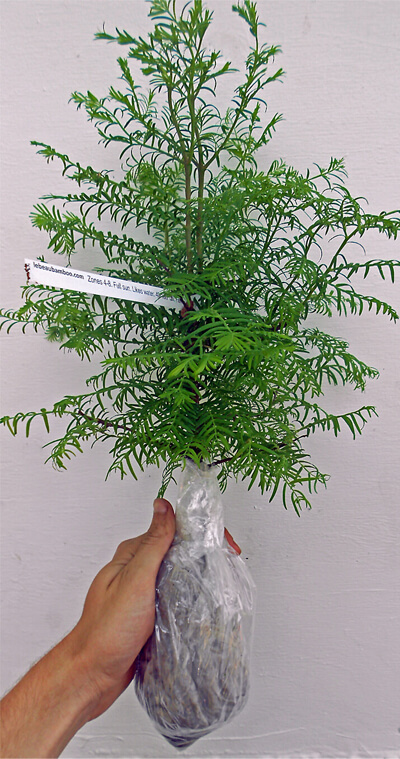 A bundle of trees. What if I am not able to plant right away?You can usually leave the plants in their shipping container unopened for 1-2 days if there were no shipping delays and you have received your plants from late November through February. Plants shipped when it is warmer can't stay in their packages for as long. |
Size Availability
Out of season.
Our main crop of most plants is available starting in late fall.
Additional batches of plugs and quarts are usually added in May.
Many of our plants are propagated in limited quantities and can sell out quickly when posted, get on the notification list below so you don't miss out. Add your email to be notified as soon as we have them back in stock:
This does NOT subscribe your email to any mailing lists, our system will only send an inventory notification message.
|

